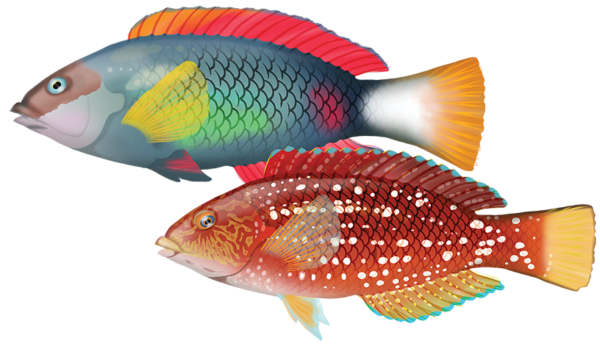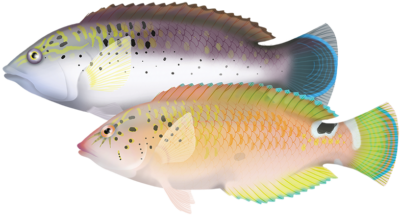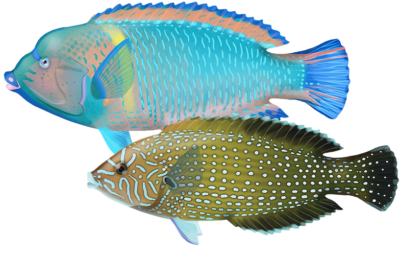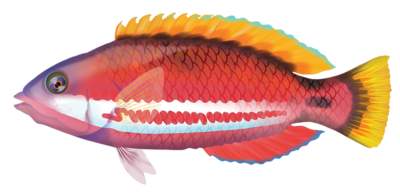Quick Facts
Distribution
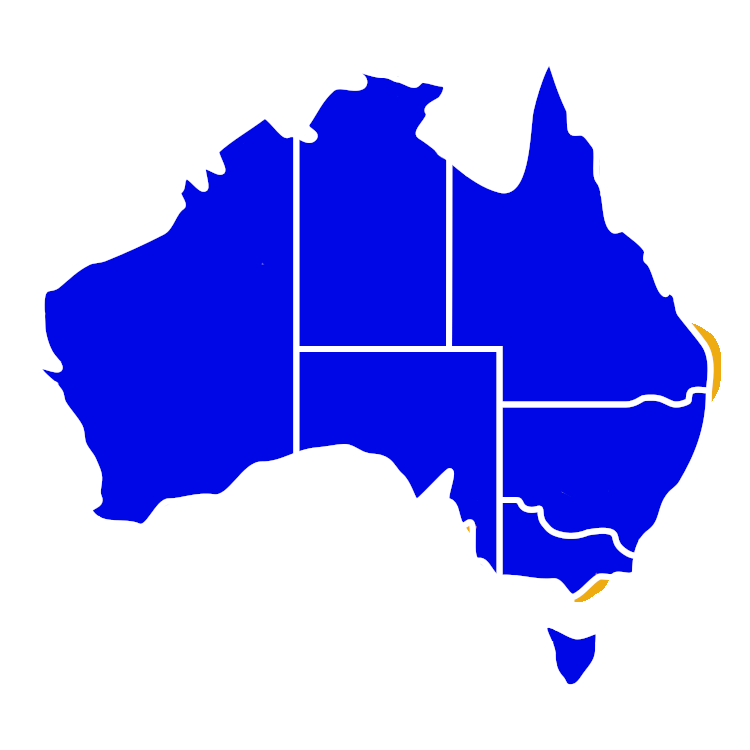
Interesting Info
- The Crimsonband Wrasse is a species of marine fish that is found along the southern coast of Australia, including Queensland to Tasmania.
- The Crimsonband Wrasse has a slender, elongated body shape with a pointed snout and large eyes. Its body is covered in small, smooth scales, and its fins are rounded and pointed.
- Males of the species have a vibrant crimson-red band that runs horizontally along the upper part of their body, from their head to their tail. The band is typically bordered by a thin blue line above and below it. The rest of the male’s body is usually greenish-blue or brown, with small white or yellow spots scattered over the fins and body. In contrast, females are generally pale yellow or pink in colour, with faint horizontal lines on their body, and lack the distinct crimson band that males have.
- They are a carnivorous fish that feeds primarily on small invertebrates such as crustaceans, molluscs, and worms.
- They are protogynous hermaphrodites, with some females transforming into males when a dominant male dies or leaves the breeding population.
- The Crimsonband Wrasse breeds from September to March in southern hemisphere, with males displaying their crimson band to attract females for mating. During courtship, the male leads the female to a crevice or cave on the reef, and deposits sperm into the female’s body cavity to fertilise her eggs.
- Estimated lifespan is up to 25 years.
Species Interaction
Recreational Fishing, Aquarium, Snorkeling & Diving
Crimsonband Wrasse are often caught as bycatch for anglers targeting other species. They are typically a catch and release species. They are more know for their striking colours and are a popular species for aquariums and to observe in the wild for snorkelers and divers.
Scientific Classification
Kingdom: Animalia
Phylum: Chordata
Class: Actinopterygii
Order: Perciformes
Family: Labridae
Genus: Notolabrus
Species: Notolabrus Gymnogenis
Conservation Status
The conservation status of the Crimsonband Wrasse in Australia is currently listed as “Least Concern” by the International Union for Conservation of Nature (IUCN) Red List. This means that they are not currently considered to be at risk of extinction and their population is believed to be stable.
Fish Taste Quality
Crimsonband wrasse are considered to be a good eating fish and are sometimes caught by recreational anglers. Their meat is white, firm, and has a mild, sweet flavour.
Taste Rating: 3/5
How to catch
Crimsonband Wrasse
Catch Difficulty: Easy
Tackle: Running Sinker Rig
Bait: Fresh cut flesh baits, Pilchards, Prawns, Squid, Worms
Technique: Keep bait on the bottom, Keep bait close to the reef/structure
Popularity: Not targeted
Crimsonband Wrasse
As Aquarium Fish
Care Level: Easy to moderate
Temperament: Peaceful
Diet: Carnivore
Reef Compatible: Yes
Minimum Tank Size: 100 gallons
Recreational Viewing
- Snorkeling & Scuba
Finding: Easy
Temperament: Peaceful
Location: Inner Reef, Outer Reef, Lagoon
Danger: None


